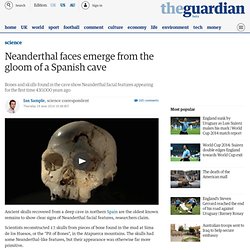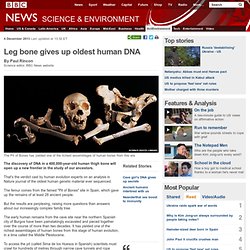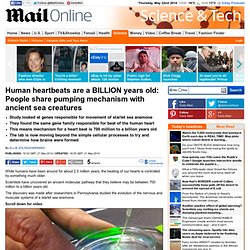

Human Evolution: Interesting Articles. Human Evolution: New Scientist Articles. Human Evolution: Daily Mail Articles. Human Evolution Enters an Exciting New Phase. If you could escape the human time scale for a moment, and regard evolution from the perspective of deep time, in which the last 10,000 years are a short chapter in a long saga, you’d say: Things are pretty wild right now.

In the most massive study of genetic variation yet, researchers estimated the age of more than one million variants, or changes to our DNA code, found across human populations. The vast majority proved to be quite young. The chronologies tell a story of evolutionary dynamics in recent human history, a period characterized by both narrow reproductive bottlenecks and sudden, enormous population growth. The evolutionary dynamics of these features resulted in a flood of new genetic variation, accumulating so fast that natural selection hasn’t caught up yet. As a species, we are freshly bursting with the raw material of evolution. “Most of the mutations that we found arose in the last 200 generations or so. Neanderthal faces emerge from the gloom of a Spanish cave. Loaded: 0% Progress: 0% Ancient skulls recovered from a deep cave in northern Spain are the oldest known remains to show clear signs of Neanderthal facial features, researchers claim.

Scientists reconstructed 17 skulls from pieces of bone found in the mud at Sima de los Huesos, or the "Pit of Bones", in the Atapuerca mountains. The skulls had some Neanderthal-like features, but their appearance was otherwise far more primitive. Juan Luis Arsuaga, professor of palaeontology at the Complutense University of Madrid, said the remains belonged to a "missing link" population that fell somewhere between the Neanderthals and a more archaic group of human forerunners. The term "missing link" has fallen out of favour with many researchers, in part because it implies a simple, step-wise progression from one species to another. The skulls come from a haul of bones that belong to at least 28 individuals who came to rest in a chamber at the bottom of a 14-metre-deep cave shaft. Leg bone gives up oldest human DNA. 4 December 2013Last updated at 13:32 ET By Paul Rincon Science editor, BBC News website The Pit of Bones has yielded one of the richest assemblages of human bones from this era The discovery of DNA in a 400,000-year-old human thigh bone will open up a new frontier in the study of our ancestors.

That's the verdict cast by human evolution experts on an analysis in Nature journal of the oldest human genetic material ever sequenced. The femur comes from the famed "Pit of Bones" site in Spain, which gave up the remains of at least 28 ancient people. But the results are perplexing, raising more questions than answers about our increasingly complex family tree. The early human remains from the cave site near the northern Spanish city of Burgos have been painstakingly excavated and pieced together over the course of more than two decades. Continue reading the main story “Start Quote We need all the data we can get to build the whole story of human evolution” "Of course, that wasn't true. Human hearts beat using a BILLION-year-old mechanism. Study looked at genes responsible for movement of starlet sea anemoneThey found the same gene family responsible for beat of the human heartThis means mechanism for a heart beat is 700 million to a billion years oldThe lab is now moving beyond the simple cellular processes to try and determine how brains were formed By Ellie Zolfagharifard Published: 16:32 GMT, 21 May 2014 | Updated: 18:25 GMT, 21 May 2014 While humans have been around for about 2.5 million years, the beating of our hearts is controlled by something much older.

Scientists have uncovered an ancient molecular pathway that they believe may be between 700 million to a billion years old. The discovery was made after researchers in Pennsylvania studied the evolution of the nervous and muscular systems of a starlet sea anemone. Scroll down for video The group at Penn State University wanted to find the genes that control certain traits in these systems. Cells in a human heart muscle contract automatically.